December - January 2023


December - January 2023

This Masterclass Guide is a concise overview aimed at exploring the use of a temporary topical external hemostat, and how to incorporate this in to your clinical practice.
■ Hemostasis is the first stage of wound healing process and data supports that chitosan and its derivatives have been shown to a positive effect1
■ Bleeding control is essential in any clinical setting, and safety in performing tasks such as sharp debridement in the OR and in the Wound Clinic is essential2
■ Rapid bleeding control enables the clinician to quickly advance to the next stage of wound healing2
■ OMNI-STAT® is a fast and effective solution for bleeding control intended for temporary topical external use for minor, moderate and severe bleeding1,3

■ OMNI-STAT® is a unique and proprietary hemostatic agent derived from chitosan, an organic polysaccharide3
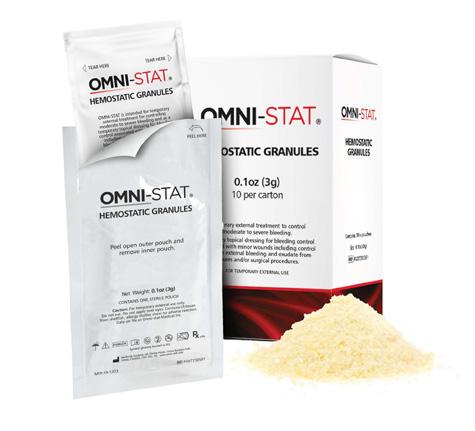
■ A highly purified form of chitin from shrimp is selected and deproteinized which undergoes partial deacetylation converting chitin to chitosan3
■ OMNI-STAT® may improve quality of granulation tissue at the wound site. It is safe and easy to use with no adverse events reported4,5
■ Wound repair
■ Rapid bleeding control
■ Hemostatic agents
■ Temporary Topical External Hemostat
■ Surgical and non surgical wounds
■ Chitin
■ Chitosan
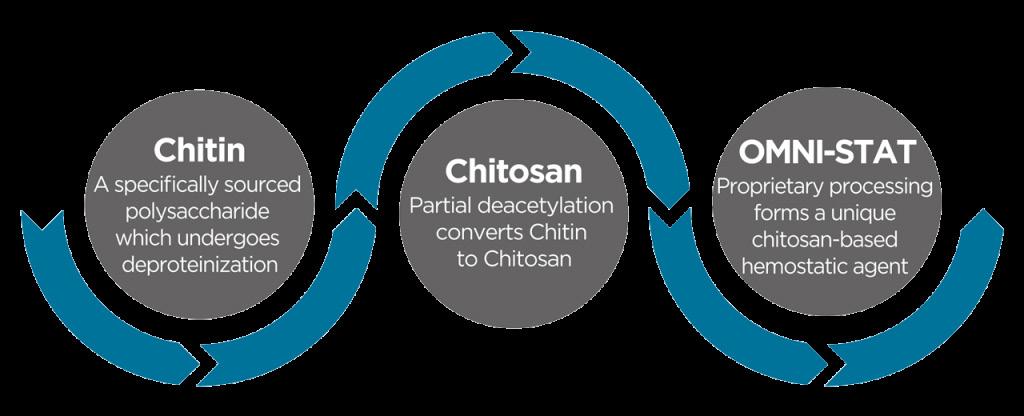
■ Blood clotting mechanism
■ The granules are comprised of high surface area granular flakes3
■ When they come into contact with blood, they absorb fluids and concentrate platelets to form a gel like clot3
■ The gel like clot plugs the bleeding source, and seals the wound3
■ This newly created physical barrier, as well as the activation of platelets via platelet concentration, enable OMNI-STAT® to stop the bleeding, and reduces chances of a rebleed6
■ Mechanism of action is independent of the body's natural clotting cascade6
■ Works in hypothermic conditions3
■ May offer benefits that aid patients with impaired coagulation3
■ Effective Product Range for minor wounds to severe arterial bleeding7
■ Effective in the presence of common anticoagulants, and clotting dysfunction8
■ Does not damage healthy tissue4
OMNI-STAT® and CELOX™ are cleared for use under the supervision of a healthcare professional.
Omni-stat Medical Inc offers a complete product line, including Celox technology that can be used for bleeding control beyond wound care and throughout the hospital.

OMNI-STAT® gauze and granules may be used for:
• Diabetic Foot Ulcers
• Venous Stasis Ulcers
• Pressure Ulcers

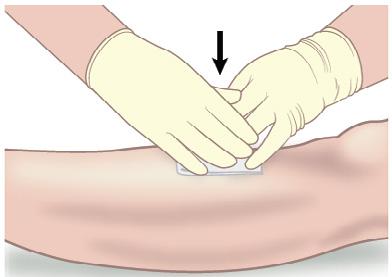
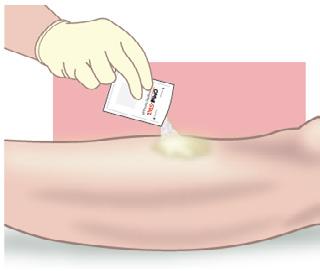
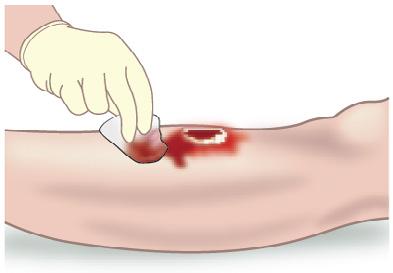

• The properties of OMNI-STAT® may enable the specialist to perform more aggressive sharp debridement on highrisk anticoagulated patients, in an outpatient or inpatient setting9
CELOX Z-Fold Gauze may be used In the setting of:

• Arterial injuries
• Road traffic accidents
CELOX™ applicator may be used for:
• Knife trauma
• Bullet or shrapnel wounds
• Complex or irregularly shaped injuries
Granules can be used for:
• Hairy areas
• Skin tears
• Lacerations
• Avulsions
• Punctures
The technology can also be used for:
• Bleeding that’s hard to control
• Anticoagulant patients
• Vascular access sites
• Bleeding fistulas
• Areas that could be difficult or Impossible to pack with standard gauze
Products may be used:
• To control external bleeding

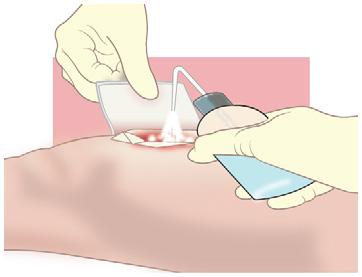
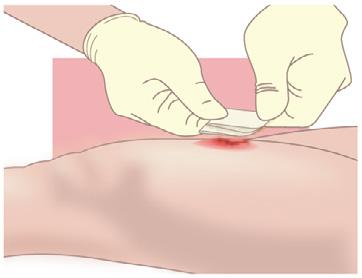
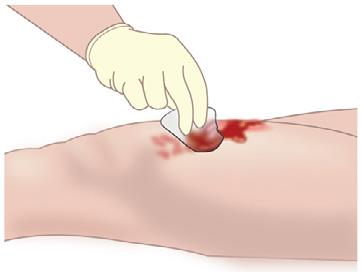
• Exudate from sutures
• Surgical procedures such as amputations
• Post sharp debridement Split thickness skin grafts, donor sites

• Cath lab, interventional radiology, dialysis centres
CELOX Vascular can be used for:
• Local management and control of surface bleeding from vascular access sites Percutaneous catheters or tubes utilizing introducer sheaths up to 16 French
OMNI-STAT® Granules (3g)
Various studies and trials highlight the efficacy and reliability of OMNI -STAT® and CELOX™ products. OMNI-STAT® and CELOXTM are brand names of equivalent proprietary chitosan technology.
■ In an animal study conducted by Kozen et al., a standard industry model of a complex groin injury with transection of the femoral vessels and 3 minutes of uncontrolled bleeding was created in 48 swine10

■ Results show that CELOX™ significantly improved hemorrhage control and survival10
■ Rall et al. report that in independent invivo test conducted, subjects treated with CELOX™ (OMNI-STAT®) Gauze demonstrated the highest rate of observed survival with 90% when compared to the current standard of care, Combat Gauze demonstrated a 60% survival rate. CELOX™ (OMNI-STAT®) also has a substantial history of use on the battlefield (with conventional and special forces) and has repeatedly proven itself in austere settings11
■ Eason et al. found that CELOXTM Vascular resulted in 100% hemostasis following 5 minutes compression It performed considerably better than both the standard gauze negative control (57% n=7) and the D-Stat Dry positive control (67% n=9)12
■ Johnson et al. assessed CELOXTM in two in vivo wound models, a lethal wound model of arterial bleeding in 6 subjects and a vascular closure site. Results showed 100% survivability and 0 occurrence of re-bleed. CELOXTM was effective in both stopping the major arterial bleeding and in sealing the simulated vascular closure site13
■ Snyder et al. report that OMNI-STAT® statistically significantly reduced time to hemostasis vs standard gauze. Mean time to hemostasis for OMNI-STAT® was 1min 19sec. The quality of the granulation tissue of the wound after 1 week was significantly improved (90%) and pain scores evaluated showed virtually no pain upon application or removal4

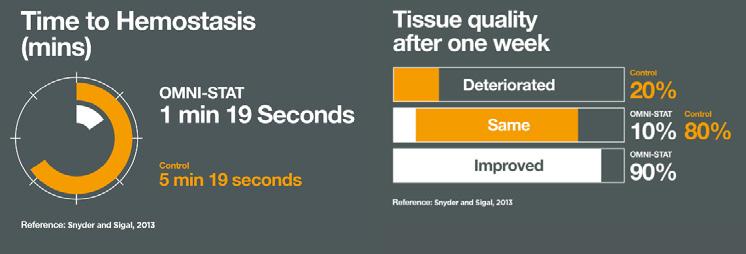
■ A prospective evaluation of OMNI-STAT® was conducted in the OR (52 patients) to compare the effectiveness of OMNI-STAT® Granules vs the retrospective use of electrocautery (89 patients) for bleeding control in patients undergoing surgical wound debridement14
■ OMNI-STAT® was shown to be as effective as electrocautery in achieving hemostasis. Significant time savings in the OR was also found, reducing mean total OR time by 19.1%. The results also showed that wounds treated with OMNI-STAT® demonstrated a more advanced stage of healing, which may be a result of the lack of tissue damage seen relative to electrocautery. The study concluded that the improved OR times may translate into increased cost effectiveness, relative to electrocautery, by increasing the number of surgical cases per day and/or using resources more effectively to treat a greater number of patients. It may also allow for bleeding control in an outpatient clinic or bedside, which could free up OR time and enable more effective management of healthcare resources14

formed
“Use of a chitosan-based hemostatic agent was able to achieve hemostasis in patients on anticoagulant therapy who required aggressive surgical debridement, including debridement of bone, and in two patients who had an elevated or near critical INR level.” 16
1. MT-18-240 Omni-stat Clinical and Scientific Product Monograph Dec 2018.
2 OMNI-STAT® MT-21-110. July 2021
3. OMNI-STAT omni-stat.com. 2023. Accessed 10-01-2023.

4. Snyder RJ, Sigal BD.The importance of hemostasis in chronic wound care: an open-label controlled clinical study of OMNI-STAT (chitosan)versus standard of care in post-debridement treatment of patients with chronic wounds with or without concomitant use of anticoagulants.WoundCareHyperbOxygen2013;4(2):9-16
5. MT-20-310 Allergenicity Potential of CELOX™.OMNI-STAT Hemostatic Devices Position Statement.
6. In Vitro and In Vivo Data on file at Omni-stat Medical Inc.
7. OMNI-STAT and CELOX™ (product packaging).
8. Millner R, Lockhart AS, Marr R.Chitosan arrests bleeding in major hepatic injuries with clotting dysfunction: an in vivo experimental study in a model of hepatic injury in thepresenceofmoderatesystemicheparinisation.AnnRCollSurgEngl2010;92(7):559-561
9. Snyder RJ, Sigal BD. Evaluation of hemostatic gauze versus standard of care for the treatment of chronic wounds in the presence of anticoagulants. Presented as a poster at SAWC 2013
10. Kozen BG, Kircher SJ, Henao J, Godinez FS, Johnson AS. An alternative hemostatic dressing: comparison of CELOX, HemCon, and QuikClot. Acad Emerg Med. 2008 Jan;15(1):74-81. doi: 10.1111/j.1553-2712.2007.00009.x. PMID: 18211317.
11. Rall JM, Cox JM, Songer AG, Cestero RF, Ross JD. Comparison of novel hemostatic dressings with QuikClot combat gauze in a standardized swine model of uncontrolled hemorrhage. J Trauma Acute Care Surg. 2013 Aug;75(2 Suppl 2):S150-6. doi: 10.1097/TA.0b013e318299d909. PMID: 23883900.
12 Reduced Application Time with a Rapid Packing Gauze Hemostat. Hoggarth A, Hardy C, Eason G, Marsden C. ATACCC, FL 2011.
13. Burgert JM, Gegel BT, Austin R 3rd, Davila A, Deeds J, Hodges L, Hover A, Lockhart C, Roy J, Simpson G, Weaver S, Wolfe W, Johnson D. Effects of arterial blood pressure on rebleeding using CELOX™ and TraumaDEX in a porcine model of lethal femoral injury. AANA J. 2010 Jun;78(3):230-6. PMID: 20572410.
14. Thibodeaux, KT, Speyrer, MS, Thibodeaux, RP, Rogers, AA, Rippon, MG. Management of postoperative bleeding in surgically debrided wounds:
Useful


